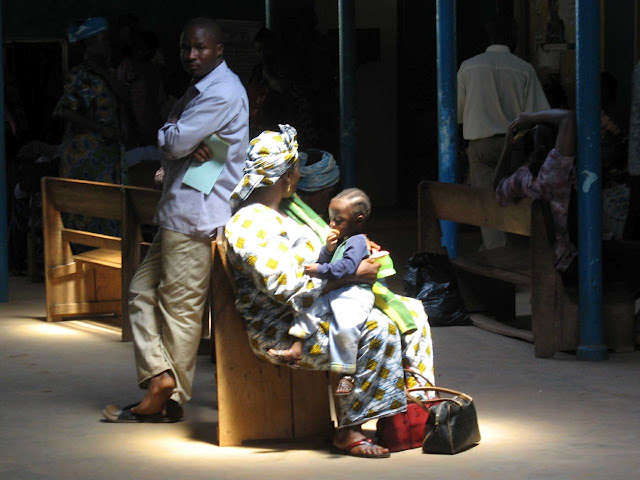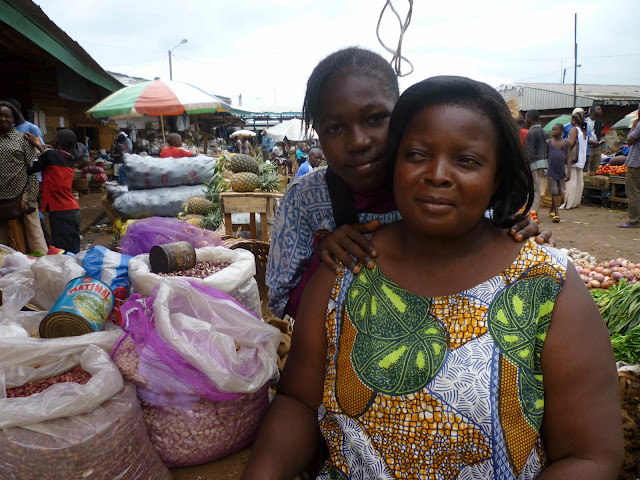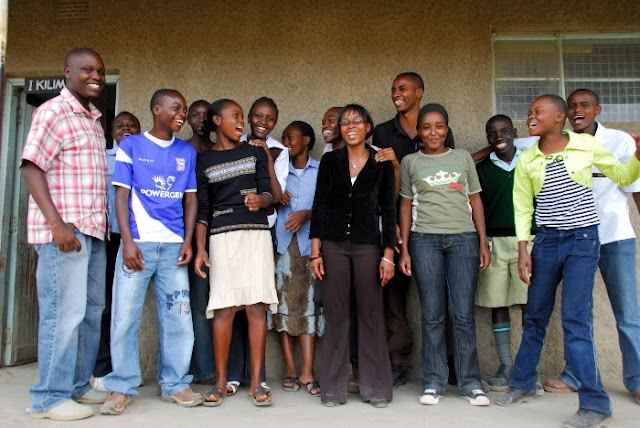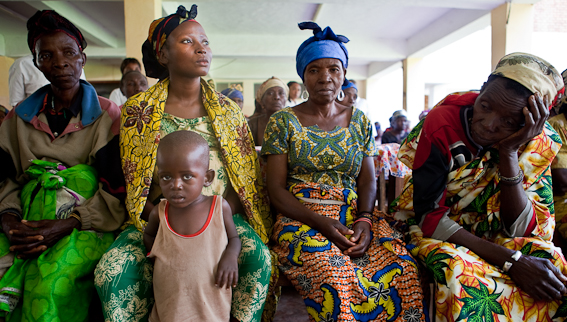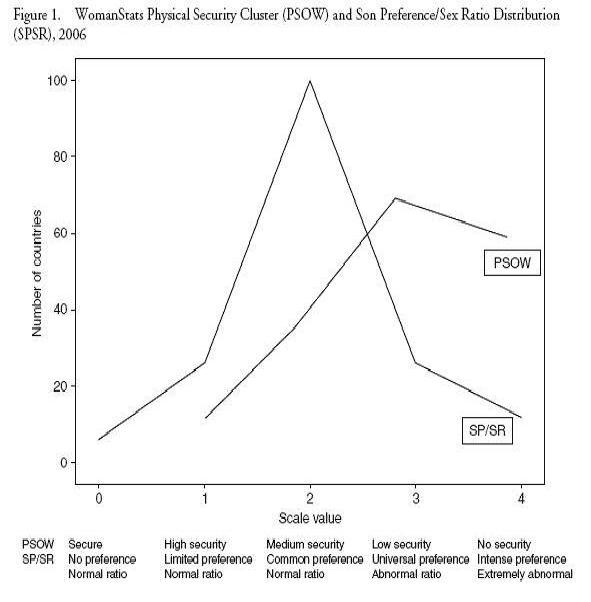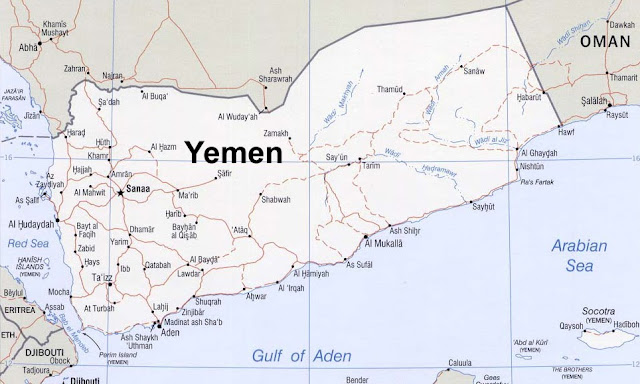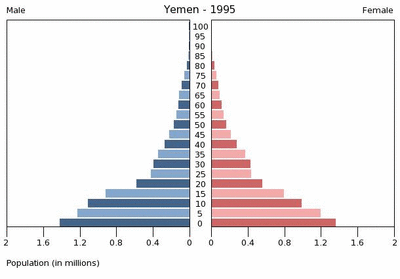-
“All Consuming:” U of M’s ‘Momentum’ on Population, Health, Environment, and More
›August 23, 2010 // By Schuyler NullMinnesota’s Institute on the Environment is only in its third year of operation but has already established itself as an emerging forum for population, health, and, environment issues, due in no small part to its excellent thrice-a-year publication, Momentum. The journal is not only chock-full of high production values and impressively nuanced stories on today’s global problems, but is also, amazingly, available for free.
Momentum has so far covered issues ranging from food security, gender equity, demographic change, geoengineering, climate change, life without oil, and sustainable development.
Highlights from the latest issue include: “Girl Empower,” by Emily Sohn; “Bomb Squad,” with Paul Ehrlich, Bjørn Lomborg, and Hans Rosling; and “Population Hero,” on the fiscal realities of stabilizing growth rates.
The lead story featured below, “All Consuming,” by David Biello, focuses on the debate over whether consumption or population growth poses a bigger threat to global sustainability.Two German Shepherds kept as pets in Europe or the U.S. use more resources in a year than the average person living in Bangladesh. The world’s richest 500 million people produce half of global carbon dioxide emissions, while the poorest 3 billion emit just 7 percent. Industrial tree-cutting is now responsible for the majority of the 13 million hectares of forest lost to fire or the blade each year — surpassing the smaller-scale footprints of subsistence farmers who leave behind long, narrow swaths of cleared land, so-called “fish bones.”
Continue reading on Momentum.
In fact, urban population growth and agricultural exports drive deforestation more than overall population growth, according to new research from geographer Ruth DeFries of Columbia University and her colleagues. In other words, the increasing urbanization of the developing world — as well as an ongoing increase in consumption in the developed world for products that have an impact on forests, whether furniture, shoe leather, or chicken fed on soy meal — is driving deforestation, rather than containing it as populations leave rural areas to concentrate in booming megalopolises.
So are the world’s environmental ills really a result of the burgeoning number of humans on the planet — growing by more than 150 people a minute and predicted by the United Nations to reach at least 9 billion people by 2050? Or are they more due to the fact that, while human population doubled in the past 50 years, we increased our use of resources fourfold?
Photo Credit: “All Consuming” courtesy of Momentum. -
Misguided Projections for Africa’s Fertility
›By assuming that sub-Saharan Africa’s total fertility rate will decrease to 2.5 children per woman by 2050, the most recent population projections issued by the Population Reference Bureau likely continue to underestimate fertility for Africa. Though northern Africa has significantly lowered fertility, sub-Saharan Africa’s TFR is still 5 children per woman. Achieving the levels projected by PRB or the United Nations will largely depend on whether the conditions that led to past fertility declines for other states can be established in sub-Saharan Africa.
Demographers have identified numerous factors associated with fertility decline, including increased education for females, shifting from a rural agricultural economy to an industrial one, and introduction of contraceptive technology. Sub-Saharan Africa is only making slow progress in each of these areas.
Surveying Obstacles to Development
Primary school enrollment is up, but the pace of improvement is declining. Meanwhile, gender gaps persist: Enrollment for boys remains significantly higher than for girls. Girls’ education is associated with lower fertility, partly because education helps women take charge of their fertility and also because education influences employment opportunities. Increased female labor force participation has been shown to increase the cost of having children, and is therefore associated with initial fertility declines.
Disease is one wildcard for Africa that limits the utility of past models of demographic transition in the African context. HIV/AIDS is decimating sub-Saharan Africa’s adult workforce and creating shortages of teachers that will impede future efforts to boost primary school enrollment. According to the United Nations, the number of teachers in sub-Saharan Africa needs to double in the next five years to reach Millennium Development goals.
Development that would shift the region’s economies from agriculture to industry is also lagging. While several West African countries are seeing some gains, the African continent on the whole faces major structural impediments to development. In The Bottom Billion, Paul Collier points out that many of these countries may have “missed the boat” to attract investment and industry that would pull the region out of poverty, partly because the least developed countries are still not cost-competitive enough when compared with current centers of manufacturing, like China.
Finally, there remains a high unmet need for family planning. One in four women aged 15 to 49 who are married or in union –- and who have expressed an interest in using contraceptives — still do not have access to family planning tools. In general, maternal mortality remains high and adolescents in the poorest households are three times more likely to become pregnant and give birth than those in the richest households, according to the most recent UN Millennium Development Goals report.
Sub-Saharan Africa: Off the Radar?
Sub-Saharan Africa suffers from a lack of attention by the international community and lack of political capacity at home. Many countries in the region are plagued by civil strife and poor governance, and developed countries continue to fall short of development assistance pledges. There is not the same sense of urgency today among developed countries about the global population explosion as there once was. Cold War politics and the environmental and feminist movements motivated much of the study of fertility and funding of population programs during the second half of the 20th century. Attention by governments and NGOs sped the fertility transition among many countries.
Today, the world’s wealthiest countries are not concerned primarily with Africa’s problems, but rather are more concerned with their own population decline and with the national security implications of population trends in areas associated with religious extremism. The recession has further hindered the flow of development funds.
Fertility is the most difficult population component to predict, and demographers must draw on the experiences of other regions to inform assessments of Africa’s population patterns. Demographers seem to be overconfident that Africa’s fertility will follow the pattern of recent declines, particularly in Latin America, which were more rapid than Western Europe’s decline due to the diffusion of technology and knowledge.
Once states begin the demographic transition towards lower fertility and mortality, they have tended to continue, with few exceptions. Therefore, most projections for Africa assume the same linear pattern of decline will hold. Yet, the low priority of Africa’s population issues among the world’s wealthiest states, combined with shortfalls in education, development, and contraception, may mean that the demographic transition in Africa will be slower than predicted.
Projections are useful to give us a picture of what the world could look like if meaningful policy changes are made. In the case of sub-Saharan Africa, prospects for these projections are dim.
Jennifer Dabbs Sciubba is the Mellon Environmental Fellow in the Department of International Studies at Rhodes College in Memphis, Tenn. She is also the author of a forthcoming book, The Future Faces of War: Population and National Security.
Photo Credit: “Waiting,” ECWA Evangel Hospital, Jos, Nigeria, courtesy of flickr user Mike Blyth. -
How Maternal Mortality and Morbidity Impact Economic Development
›“Investing in women and girls is the right thing to do,” says Mayra Buvinic, sector director of the World Bank’s gender and development group. “It is not only fair for gender equality, but it is smart economics.” But while it may be smart economics, many developing countries fail to address the underlying social causes that impact economic growth, such as poverty and gender inequality. Buvinic was joined by Dr. Nomonde Xundu, health attaché at the Embassy of South Africa in Washington, D.C., and Mary Ellen Stanton, senior maternal health advisor at the U.S. Agency for International Development (USAID), at the sixth meeting of the Advancing Policy Dialogue on Maternal Health Series, which addressed the economic impact of maternal mortality and provided evidence for the need for increased investment in maternal health.
-
Boosting the U.S. Role in the Global Health Arena
›A new video from the Commission on Smart Global Health Policy, which was established by the Center for Strategic & International Studies, reviews the commission’s progress towards its goal of encouraging the U.S. government to embrace global health as a pillar of U.S. foreign policy.
The video reviews the recommendations from the commission’s March 2010 report, A Healthier, Safer and More Prosperous World: 1) Maintain robust U.S. support for the fight against HIV/AIDS, malaria, and tuberculosis; 2) Prioritize maternal and child health, especially in sub-Saharan Africa and South Asia; 3) Help other nations improve their capacity to prevent and respond to outbreaks of contagious disease; 4) Expand U.S. capacity to fund future global health initiatives by securing long-term investments for such efforts; and 5) Step up U.S. funding for multilaterals engaged in the global health field, including the World Health Organization, Global Fund, UNICEF, the World Bank, and the GAVI Alliance.
In the months ahead, commission members will be participating in public forums throughout the United States to discuss and promote the recommendations included in the report, before gathering in January to review the Obama administration’s progress on global health as the administration begins its third year. To date, the centerpiece of the administration’s health outreach efforts has been the six-year, $63 billion Global Health Initiative, designed to promote an enhanced U.S. role in addressing public health issues overseas.
The CSIS Global Health Policy Center will also be launching a year-long debate series called “Fault Lines in Global Health,” focusing on controversial topics in the global health field. The series’ kick-off event will center on U.S. AIDS funding, and is scheduled for Friday, August 6, 2010, from 9:30-11:00 a.m. -
Interview With Wilson Center Scholar Margaret Wamuyu Muthee: Envisioning a New Future for Kenya’s Next Generation
›July 29, 2010 // By Wilson Center StaffYouth in sub-Saharan Africa constitute a large and growing portion of the region’s population, yet remain underserved by family planning and reproductive health programs. New Security Beat recently interviewed Margaret Wamuyu Muthee, an Africa Program Scholar at the Woodrow Wilson Center, about this problem. Muthee is currently working on a project documenting both the opportunities and challenges for young people growing up in Kenya.
New Security Beat: How do you define youth?Margaret Wamuyu Muthee: The African Union has defined youth as every person between the ages of 15 to 35 years, while the United Nations defines youth as persons between the ages of 15 and 24. I will be concentrating on the age group defined by the African Union.
NSB: What are some opportunities and challenges facing youth in Kenya?
However, I will not only be relying on age. There are other aspects that I must take into consideration. Many children assume the roles of an adult or a care-taker when they are at an early age. Children in African nations face different challenges [compared to children in Western countries], as there are fewer opportunities for transition in Africa.MWM: This is a very important stage for exposing youth to the available support and teaching them about the social economy. Some of the difficulties lie in the lack of resources and corruption, such as misuse of funds that are provided to the government by outside sources.
NSB: Which programs are taking actions to empower youth in Kenya?
On a more positive outlook, youth are very resilient. They have a wide range of potential and capacity that can be utilized right away. African nations, just like China, have an enormous population that can be a human resource. All we have to do is positively tap into their potential to make good changes.MWM: The Youth Enterprise Development Fund (YEDF) works to increase economic opportunities for Kenyan youth in nation-building through enterprise development. YEDF also works to lower the unemployment rate and teach certain skills for future employment. One downside of this fund is that even though it provides money, it does not provide mentorship for the youth who execute the programs.
NSB: Are these programs enough to address youth challenges?
Another program is Yes Youth Can! This $45 million initiative was created by the U.S. ambassador to Kenya and USAID. The program is designed to create local and national networks of youth leaders to advocate peaceful economic and governmental reforms. The wonderful thing about this organization is that it is completely youth-driven.MWM: Sometimes these programs are seen as too small and too late. Youth are seen as violent, and these programs are made to keep them busy. Programs need to address all the facts, from start to finish.
NSB: Are there programs specifically targeted at female youth?MWM: We need programs that address pregnancies, HIV/AIDS, and education for young women. These education programs not only need to teach them about pregnancies and HIV/AIDS, but also educate women about their rights: how to say “no” and object to certain actions.
NSB: Are family planning and reproductive health incorporated into youth education?
However, there are complications when it comes to female rights. There are sexual offense laws that females do not even know about. The implementation of these laws can be non-existent. Either the police system is flawed or accessing lawyers is too expensive for females. And even if a lawyer is hired, the rapist can pay off a judge, so the judge will not convict him.MWM: There are already reproductive health campaigns in Kenya. One example is the ABC program: Abstinence, Be faithful, Condom use. Everyone these days, in rural and urban environments, knows about HIV/AIDS. There needs to be more programs regarding family planning and health; there is only a limited amount of knowledge getting passed around about those two issues.
Margaret Wamuyu Muthee is the Programs Manager for Kenya’s University of Nairobi Center for Human Rights and Peace, and a current scholar in the Woodrow Wilson Center’s Africa Program.
There is a new proposed Kenyan constitution that bans abortion unless a doctor permits the abortion due to health reasons, or if the mother’s health is in critical danger. Many females die because they cannot legally get an abortion and try to abort their baby on their own, or accept services from a backstreet clinic.
We also have cultural practices that put up barriers to the spread of family planning and health. One such example is the practice of early female marriages. Girls as young as 10 years old will be forced to marry a much older man. These girls have not had proper education on reproductive health or family planning.
In addition, adults are still too shy to address youth that are having sex, and are embarrassed to talk about their health if they have HIV/AIDS. We need to educate more youth and provide the means for them to live safer lives.
Josephine Kim and Marie Hokenson are cadets at the United States Military Academy at West Point and interns with the Woodrow Wilson Center’s Environmental Change and Security Program.
Photo Credit: “The Mentees and their mentors,” used courtesy of flickr user The Advocacy Project. -
Addressing Gender-Based Violence to Curb HIV
›July 28, 2010 // By Marie HokensonAt the recent International AIDS Conference in Vienna, Austria, an astonishing development in the campaign to stem the spread of HIV/AIDS was unveiled—a microbicide with the ability to reduce the risk of transmission of HIV. This welcome development coincides with an intensified focus on women’s health and security needs among donors, especially the United States.
At the conference, the “Gender Programming and Practices: Practical Approaches with HIV and AIDS” session took an integrated approach, examining the links between gender-based violence and HIV/AIDS infection. Women are more vulnerable to gender-based violence and HIV infection than men, particularly in parts of sub-Saharan Africa where “girls and women aged 15 to 19 are three times more likely” to become infected with HIV than men in the same age group, according to the World Bank.
Michelle Moloney-Kitts, with the Office of the U.S. Global AIDS Coordinator, said that gender-based violence “affects not only public health, but [also] the ability of women and girls to contribute to developing their countries.” Since women play integral roles in supporting their families and communities in developing nations, their absence or weakened capacity due to HIV infection, injuries, or unwanted pregnancy can have larger repercussions for economic development and community health.
Deep Roots: Changing Minds About Gender-Based Violence
Elizabeth Mataka, the UN Secretary-General’s special envoy for AIDS in Africa, described the obstacles facing female victims of gender-based violence as “deep-rooted social, economic, legal, and cultural affairs” in their communities. Mataka asserted that “communities must be engaged” through a “change in mindset” in order to allow these women to “claim their basic human rights.” Scrutinizing the paucity of women’s organizations, she cited a “serious shortage of women’s leadership at the grassroots level” as a problem that must be overcome to empower and protect women.
Pamela Barnes, a co-leader of the Partnership to End Sexual Violence Against Girls, highlighted the extent of this “deep-rooted societal issue.” She pointed out that a 2007 Swaziland study found the most “common venue for sexual violence was…within the homes of the victims.”
Rui Bastos, representing Mozambique’s Ministry of Health, added that there is a pressing need to “change relationships between men and women,” and called for a shift in the current relationship dynamic to “give power to the women.” Noting the low number of men receiving HIV treatment, he called on men to “increase demand in treatment” in order to stem the spread of the disease.
Silent Voices: Talking About Sexual Violence Against Minors
Since the Swaziland survey found that “30 percent of the respondents indicated that they had experienced some form of sexual violence prior to the age of 15,” Barnes said greater efforts must be made to educate children about how to protect themselves from sexual violence. She added that efforts to protect children should also address other “risk factors for abuse [which] include lack of education, exposure to emotional abuse, and witnessing sexual assault.”
At a recent Wilson Center event on sexual violence against minors, Jama Gulaid of UNICEF Swaziland said that while talking about sexuality is not easy, “when you bring in violence it is even more difficult.” For that reason, Gulaid said, “you have to do two things—you have to share information and you have to present it in certain ways.” He explained that Swaziland was addressing the issue by relying on school-based interventions, which include trained community-child protection groups, toll-free telephone lines, case investigation services, and personal counseling.
Prevention First: Scaling Up to Stop Rape
While the new microbicide might help female victims of sexual violence avoid HIV infection, it will not stop the problem of gender-based violence. That is why Moloney-Kitts called on donors and NGOs to “scale up gender-based violence programs,” but in a way that goes beyond simply improving “post-rape care” and instead places greater emphasis on prevention efforts.
Not only would better rape prevention help reduce HIV and STD infection rates, but it would also help women avoid psychological damage and unwanted pregnancies—and, as Moloney-Kitts pointed out, improve economic development and enhance public health at the same time.
For more on gender-based violence, see these Wilson Center events:- Gender-Based Violence in Sub-Saharan Africa: A Review of Demographic and Health Survey Findings and Their Use in National Planning
- From Relief to Development: Gender-Based Violence Interventions in Conflict and Post-Conflict Contexts
- Dynamics Of Sexual Violence In The Eastern Democratic Republic Of Congo: Perpetrators, Community Response, and Policy Implications
Photo Credit: “Congo Kivu Violences Panzi,” used courtesy of flickr user andré thiel. -
WomanStats Maps Gender-Linked Security Issues
›The WomanStats Project has published an array of maps depicting the challenges and conditions facing women worldwide today. The maps, which serve as a visual representation of the project’s database, cover gender-linked security issues such as: son preference and sex ratio, physical security, inequity in family law, human trafficking, polygamy, maternal mortality, discrepancy in education, government participation, intermingling between the sexes in public, and required dress codes.
These maps help researchers visually see correlations between two or more map themes. For example, Women’s Physical Security is moderately correlated to fertility rate, while Sex Ratio/Son Preference is not highly correlated to any other measures tested, such as women in the labor force, democracy, political rights, and economic rights. In addition to maps, the WomanStats Project’s database was used to create graphs that compare the scale values of Physical Security Clusters and Son Preference/Sex Ratio Distributions to the number of countries the scale level affected.
Some of the maps would benefit from additional functionality. For example, the “Women’s Physical Security” map broadly categorizes states based on high, medium, and low levels of security, but the legend is not linked to the definitions of these classifications. Another useful addition would be data tables that rank the countries for each theme. Such enhancements would better enable the viewer to perform empirical and spatial analysis of the status of women.
Overall, the WomanStats Project maps offer the viewer engaging visual depictions of how women’s lives vary across the world, and how countries compare to each other in terms of women’s security.
Josephine Kim is a cadet at the United States Military Academy at West Point and an intern with the Woodrow Wilson Center’s Environmental Change and Security Program.
Map and graph used courtesy of the WomanStats Project. -
Demographics, Depleted Resources, and Al Qaeda Inflame Tensions in Yemen
›July 21, 2010 // By Schuyler NullA second spectacular Al Qaeda attack on Yemeni government security buildings in less than a month is a worrisome sign that the terrorist group may be trying to take advantage of a country splitting at the seams. U.S. officials are concerned that Yemen, like neighboring Somalia, may become a failed state due to a myriad of challenges, including a separatist movement in the south, tensions over government corruption charges, competition for dwindling natural resources, and one of the fastest growing populations in the world.
Wells Running Dry
Water shortages have become commonplace in Yemen. Last year, the Sunday Times reported that Yemen could become the first modern state to run out of water, “providing a taste of the conflict and mass movement of populations that may spread across the world if population growth outstrips natural resources.”
Earlier this year, government forces came to blows with locals over a disputed water well license in the south. Twenty homes were damaged and two people were killed during the resulting eight day stand-off, according to Reuters.
The heavily populated highlands, home to the capital city of Sanaa, face particularly staggering scarcity. Wells serving the two million people in the capital must now stretch 2,600 – 3,200 feet below the surface to reach an aquifer and many have simply dried up, according to reports.
Yemeni Water and Environment Minister Abdul-Rahman al-Iryani told a Reuters reporter that the country’s burgeoning water crisis is “almost inevitable because of the geography and climate of Yemen, coupled with uncontrolled population growth and very low capacity for managing resources.”
Nineteen of Yemen’s 21 aquifers are being drained faster than they can recover, due to diesel subsidies that encourage excessive pumping, loose government enforcement of existing drilling laws, and growing population demand. Qat farmers in particular represent an excessive portion of water consumption; growing the popular narcotic accounts for 37 percent of agricultural water consumption. Meanwhile, according to a study by the World Food Programme this year, 32.1 percent of the population is food insecure and the country has become reliant on imported wheat.
Yemen’s other wells – the oil variety – have long been the country’s sole source of significant income. According to ASPO, oil has historically represented 70-75 percent of the government’s revenue. But recent exploration efforts have failed to uncover significant additions to Yemen’s reserves, and as a result oil exports have declined 56 percent since 2001. The steep decline has pushed Yemeni authorities to look to other natural resources, such as rare minerals and natural gas, but the infrastructure to support such projects will take significant time and money to develop.
The Fastest Growing Population in the Middle East
Despite the country’s limited resources, Yemen’s population of 22.8 million people is growing faster than any other country in the Middle East. According to projections from the Population Reference Bureau, by 2050, Yemen’s burgeoning population is expected to rival that of Spain.
Fully 45 percent of the current population is under the age of 15 – a troubling ratio that is expected to grow in the near future. The charts from the U.S. Census Bureau embedded below illustrate the dramatic growth of the country’s youth bulge from 1995 through 2030.
A poor record on women’s rights and a highly rural, traditional society contribute to these rapid growth scenarios. According to Population Action International’s Elizabeth Leahy Madsen, only 41 percent of Yemeni women are literate and their total fertility rate is well over the global average. A recent survey from Social Watch ranking education, economic, and political empowerment rated Yemen last in the world in gender equity. Yemeni scholar Sultana Al-Jeham pointed out during her Wilson Center presentation, “Yemeni Women: Challenges and Little Hope,” that there is only one woman in a national parliament of 301 members and that ambitious political women routinely face systematic marginalization.
A contributing factor is that 70 percent of Yemen’s population live outside of cities – far more than any other country in the region – making access to education and healthcare difficult, especially in the large swaths of land not controlled by the government.
External migration from war-torn east Africa adds to Yemen’s demographic strains. According to IRIN, approximately 700,000 Somali refugees currently reside in country, and that number may grow as the situation in Somalia continues to escalate. Within Yemen’s own borders, another 320,000 internally displaced people have fled conflict-ridden areas, further disrupting the country’s internal dynamics.
Corruption and Rebellion
Competition over resources, perceived corruption, and Al Qaeda activity have put considerable pressure on the Saleh regime in Sanaa. The government faces serious dissidence in both the north and the south, and the Los Angeles Times reports that talk of rebellion is both widespread and loud:Much of southern and eastern Yemen are almost entirely beyond the central government’s control. Many Yemeni soldiers say they won’t wear their uniforms outside the southern port city of Aden for fear of being killed. In recent months, officials have been attacked after trying to raise the Yemeni flag over government offices in the south.
USAID rates Yemen’s effective governance amongst the lowest in the world (below the 25th percentile), reflecting Sanaa’s poor control and high levels of corruption. Some reports claim that up to a third of Yemen’s 100,000-man army is made up of “ghost soldiers” who do not actually exist but whose commanders collect their salaries and equipment to sell on the open market.
The West and Al Qaeda
In testimony before Congress earlier this year, Assistant Secretary of State Jeffrey Feltman called on the Yemeni government to take a comprehensive approach to “address the security, political, and economic challenges that it faces,” including its natural resource and demographic challenges.
The Yemeni government is poised to receive $150 million in bilateral military assistance from the United States. But some experts are critical of that approach: Dr. Mustafa Alani of the Dubai-based Gulf Research Center told UN Dispatch that, “you are not going to solve the terrorist problem in Yemen by killing terrorists,” calling instead for investing in economic development.
USAID has budgeted $67 million for development assistance, economic support, and training programs in Yemen for FY 2010 and has requested $106 million for FY 2011 (although about a third is designated for foreign military financing).
While Yemen’s Al Qaeda presence continues to captivate Western governments, it is the country’s other problems – resource scarcity, corruption, and demographic issues – that make it vulnerable to begin with and arguably represent the greater threat to its long-term stability. The United States and other developed countries should address these cascading problems in constructive ways, before the country devolves into a more dangerous state like Somalia or Afghanistan. In keeping with the tenets of the Obama administration’s National Security Strategy, an exercise in American soft power in Yemen might pay great dividends in hard power gains.
Sources: Association for the Study of Peak Oil – USA, Central Intelligence Agency, Congressional Research Service, Guardian, IRIN, Los Angeles Times, New York Times, Population Action International, Population Reference Bureau, ReliefWeb, Reuters, Social Watch, Sunday Times, U.S. Census Bureau, U.S. Department of State, UN Dispatch, USA Today, USAID, World Food Programme.
Photo Credit: “Yemen pol 2002” via Wikimedia Commons courtesy of the U.S. Federal Government and “Yemen youth bulge animation” arranged by Schuyler Null using images courtesy of the U.S. Census Bureau’s International Data Base.
Showing posts from category gender.


